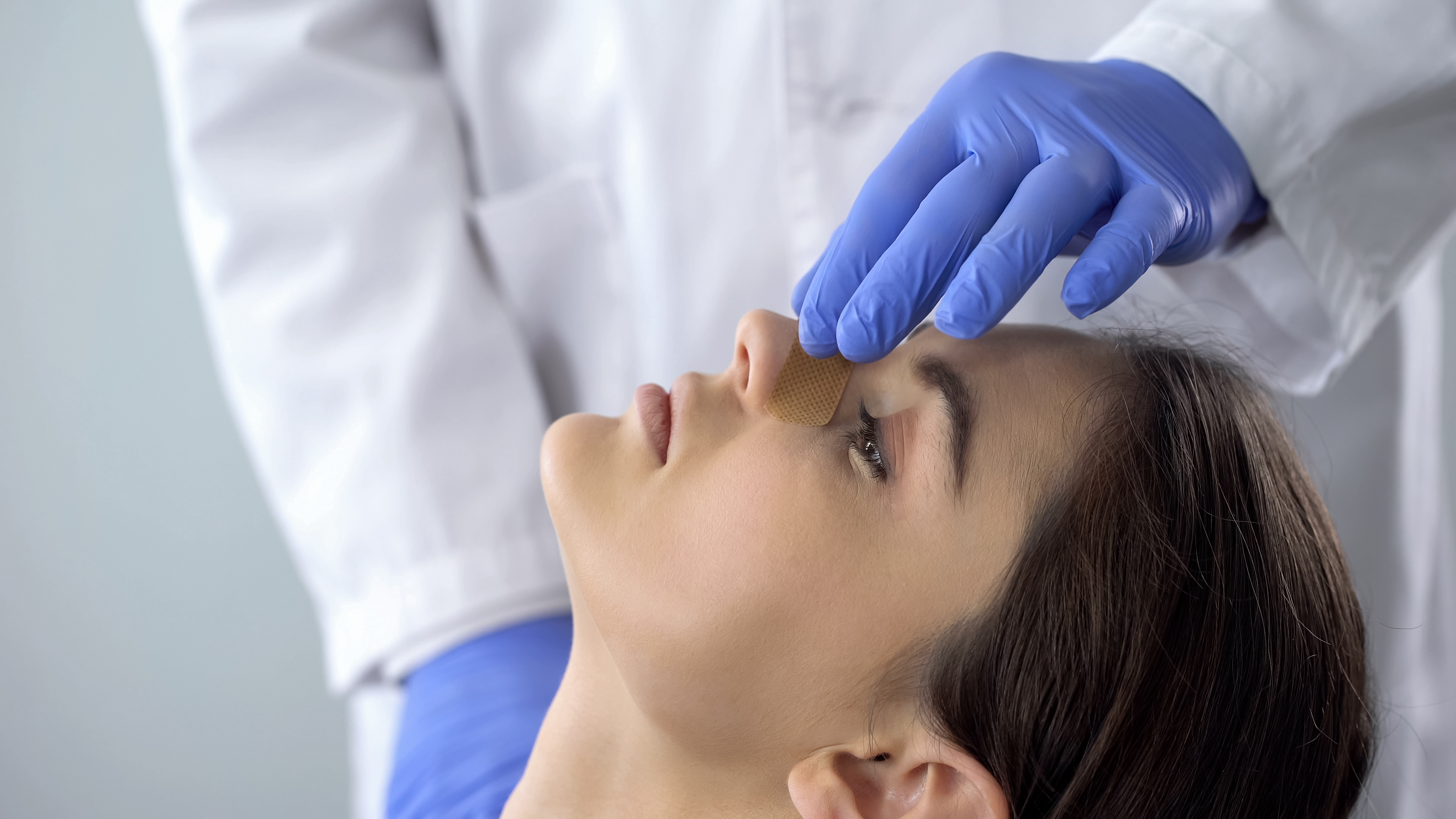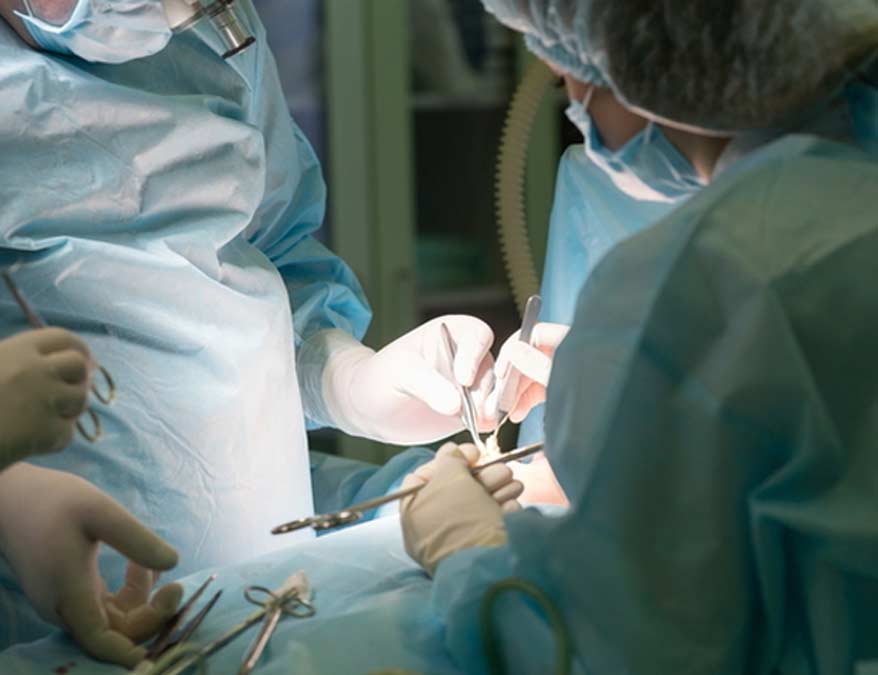
A septoplasty is a surgery that corrects a deviated septum.
The septum is the midline nasal structure that separates the nasal passages. It is lined with a mucus secreting cover and is made of thin cartilage and bone. If the septum is deviated, that is, significantly off-center, warped or crooked – breathing through the nose may be difficult. Septoplasty is the surgical correction of the septum to help an individual breathe better.
Who Is a Candidate?
This procedure is typically performed in individuals that have completed their adolescent growth spurt, as the septum represents an important growth plate for the structure of the face.
Septoplasty is performed in individuals with significant breathing impairment due to an off-center, warped or crooked (deviated) septum. People who suffer from a deviated septum and may benefit from a septoplasty may also experience symptoms such as:
- Nosebleeds
- Facial pain
- Headache
- Postnasal drip
- Loud breathing and snoring during sleep
A deviated septum may also contribute to sleep apnea, a serious condition in which a person stops breathing during sleep. While septoplasty alone is not a complete solution to treat sleep apnea, it improves sleep quality and CPAP usage.
Candidates for septoplasty must also be in good physical health. Doctors are hesitant to perform nonessential surgeries on people who are at a high risk of experiencing complications. Even if your deviated septum has a negative impact on your health, other existing health conditions or lifestyle factors could make the risks of the surgery outweigh the benefits. Candidates should be nonsmokers, or they should be able to quit several weeks before the surgery to prevent complications.

How Septoplasty Works
Septoplasty is an outpatient procedure that can be performed under sedation or general anesthesia and is usually completed in under 90 minutes. During septoplasty, small incisions are made on the septum inside the nose exposing the crooked portion of septum. The obstructing portions are either removed or repositioned to improve the nasal airway. The incisions are sealed with absorbable suture. Often times, silicone splints are secured in each nostril to support the septum and facilitate optimal healing.
Sometimes, a rhinoplasty, or “nose job,” may be combined with septoplasty to improve the appearance of the nose as well. Septoplasty may also be combined with sinus surgery as well to address chronic sinus infections.
What to Expect
Before your surgery, your doctor will give you detailed instructions on how to prepare. It is important to stop taking all anti-inflammatory medicines (ilike aspirin, ibuprofen, naproxen, etc.) two weeks prior to septoplasty. In addition, stop all herbal supplements and vitamins two weeks prior to surgery.
Surgery is performed on an empty stomach, therefore no food or beverages after midnight prior to septoplasty.
On the day of surgery, the individual undergoing septoplasty requires someone to accompany them to the surgery center and transport them home after surgery. Most individuals require assistance for the first few days after surgery. Following your doctor’s instructions for caring for your nose post-surgery is essential for fast and easy healing.
Septoplasty Recovery
After septoplasty, individuals may expect minimal swelling and pain. Bruising of the nose and eyes are not expected after surgery. Most individuals only require prescription pain medications for the first two to three days.
It is normal to have mild bleeding from the nose for the first 72 hours. It is a good idea to ice the nasal bridge intermittently and keep one’s head elevated with pillows while sleeping the first 72 hours for comfort measure.
The silicone splints may result in increased mucus production and may obstruct the nose with a mild sinus pressure sensation. The splints remain within the nose for approximately one week after surgery.
Individuals that undergo septoplasty usually require one week off from work/school, but many are able to return back to their daily routine within three to four days. After septoplasty, individuals are instructed not to blow their nose and to sneeze with one’s mouth open to reduce the risk of bleeding. Strenuous physical activity (yoga, running, weightlifting) should be avoided for approximately two weeks to reduce the risk of bleeding. Once the splints, are removed the individual will immediately notice improvement in the nasal airway and breathe much better.

Risks of Septoplasty
Septoplasty is a safe procedure, but like every surgery, there are risks associated:
- Bleeding: May require intervention to stop the bleeding
- Septum perforation: If there is injury to both sides of the septum, a permanent hole may result and lead to frequent nose bleeds, crusting and a whistling sensation. However, most septum perforations after septoplasty go unnoticed unless greater than 1 cm. Larger holes require surgical repair.
- Septum hematoma: A blood collection that might compromise the healing of the septum and needs to be identified and drained as soon as possible.
- Poor cosmetic outcome: If too much of the septum is removed, this may result in alteration to the dorsal profile of the nose.
- Worsening or minimal improvement in the nasal airway with the need for further intervention.
- Intranasal scarring may impair the nasal airway and require cutting the scars, which is typically performed in the office.
- Rarely, a patient may experience numbness of the upper teeth, loss of the sense of smell, CSF leak, or injury to the eyes.


